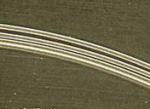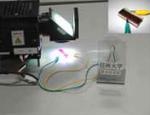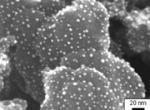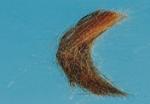View All
Silica-coated fiber
2010.03.18.
New cell structure for dye-sensitized solar cell
2010.03.18.
[Materials and Chemical Engineering Course]
Professor Eiji Suzuki and co-workers successfully developed a new cell structure for dye-sensitized solar cells, which are anticipated as the next-generation solar cell. Using p-type semiconductor composed of dye-modified nanoparticles (1 nanometer = 10-9 meters) as the positive electrode, and conventional n-type semiconductor, record-breaking open potential voltage was achieved.
Carbon-supported platinum electrocatalysts for direct methanol fuel cell
2010.03.18.
[Materials and Chemical Engineering Course]
Professor Yoshio Takasu and co-workers have been undertaking research and development on catalysts composed of platinum-based nanoparticles (1 nanometer = 10-9 meters) for direct methanol fuel cells. In collaboration with Toray Industries, Inc., the prospects for micro DMFC which can be installed on mobile phones has been set.
Discharging-printing system
2010.03.18.
Professor Hamada and coworkers created the discharging-printing system using ink-jet printer. Discharging a color on a printing area from colored T-shirts, and print with various colors on the discharged part immediately by pigments in the system. Mimaki Engineering Corporation sells the ink-jet printer using this system.
Quantum sieving effect of fluorinated activated carbon fibers
2010.03.18.
Associate Professor Hattori and coworkers have reported that the fluorinated activated carbon fibers (F-ACFs) can act as a quantum molecular sieve. Quantum effects in molecular adsorption become of importance if the difference between pore diameter and the molecular diameter is no longer large compared to the de Broglie wavelength of radial motion. This makes the F-ACFs start to behave as quantum molecular sieves for hydrogen and deuterium.











